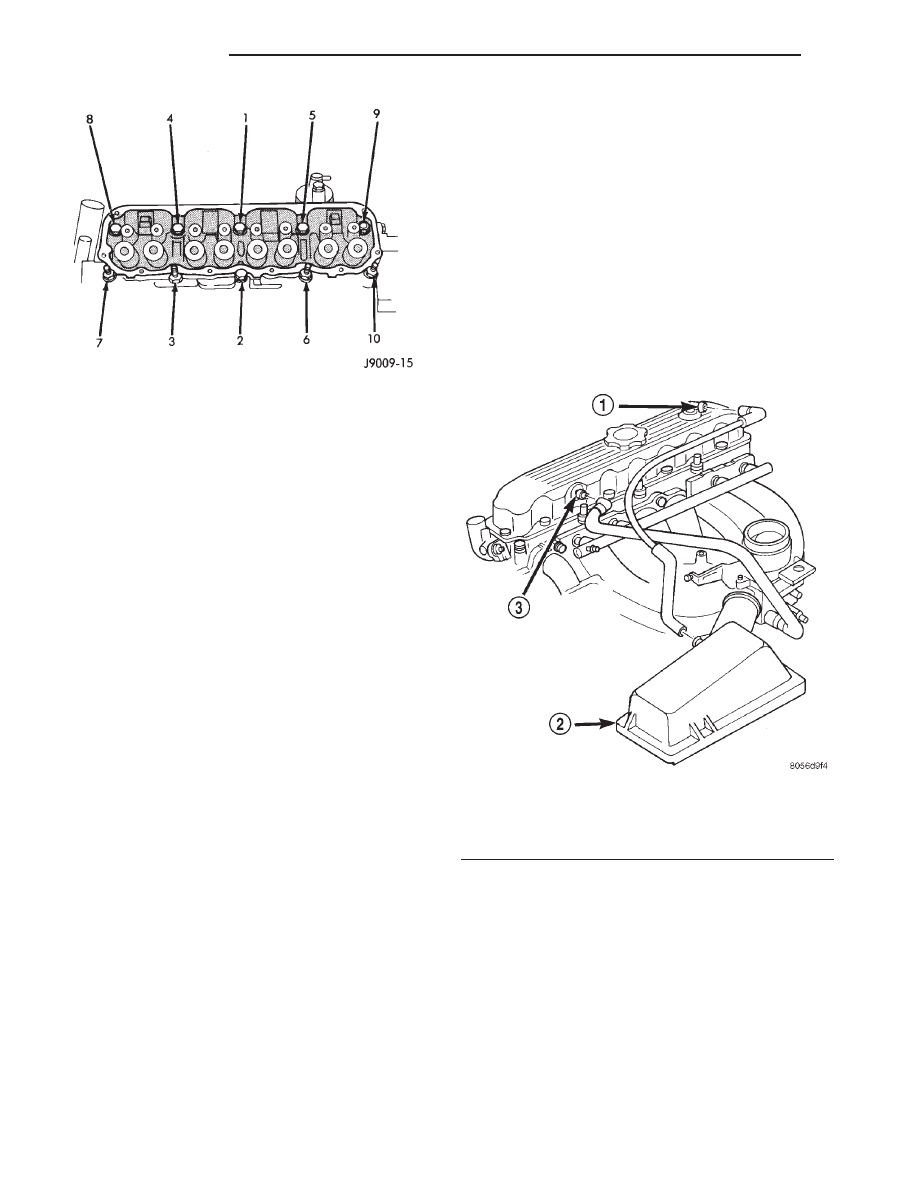Dodge Dakota (R1). Manual - part 459

(18) Attach the air conditioning compressor mount-
ing bracket to the engine cylinder head and block.
Tighten the bolts to 40 N·m (30 ft. lbs.) torque.
(19) Attach the air conditioning compressor to the
bracket. Tighten the bolts to 27 N·m (20 ft. lbs.)
torque.
CAUTION: The accessory drive belt must be routed
correctly. Incorrect routing can cause the water
pump to turn in the opposite direction causing the
engine to overheat.
(20) Install the accessory drive belt and correctly
tension the belt (Refer to 7 - COOLING/ACCESSORY
DRIVE/DRIVE BELTS - INSTALLATION).
(21) Install the resonator assembly and air in-let
hose. Tighten clamps to 4 N·m (35 in. lbs.).
(22) Connect the hoses to the thermostat housing.
(23) Install the coolant temperature sending unit
connector.
(24) Connect negative cable to battery.
(25) Connect the upper radiator hose and heater
hose at the thermostat housing.
(26) Fill the cooling system. (Refer to 7 - COOL-
ING - STANDARD PROCEDURE) Check for leaks.
WARNING: USE EXTREME CAUTION WHEN THE
ENGINE IS OPERATING. DO NOT STAND IN DIRECT
LINE WITH THE FAN. DO NOT PUT HANDS NEAR
THE PULLEYS, BELTS OR FAN. DO NOT WEAR
LOOSE CLOTHING.
(27) Operate the engine with the radiator cap off.
Inspect for leaks and continue operating the engine
until the thermostat opens. Add coolant, if required.
CYLINDER HEAD COVER(S)
REMOVAL
A cured gasket is part of the engine cylinder head
cover.
(1) Disconnect negative cable from battery.
(2) Disconnect the Crankcase Ventilation (CCV)
vacuum hose from engine cylinder head cover (Fig.
17).
(3) Remove the air inlet hose and resonator from
the air cleaner and throttle body.
(4) Remove the engine cylinder head cover mount-
ing bolts.
(5) Remove the engine cylinder head cover (Fig.
17).
(6) Remove any original sealer from the cover seal-
ing surface of the engine cylinder head and clean the
surface using a fabric cleaner.
(7) Remove all residue from the sealing surface
using a clean, dry cloth.
CLEANING
Clean cylinder head cover gasket surface.
Clean head rail, if necessary.
INSPECTION
Inspect cover for distortion and straighten, if nec-
essary.
Fig. 16 Engine cylinder head Bolt Tightening
Sequence
Fig. 17 Engine Cylinder Head Cover
1 - AIR INLET FITTING
2 - AIR FILTER COVER
3 - FIXED ORIFICE FITTING
9 - 24
ENGINE 2.5L
AN
CYLINDER HEAD (Continued)